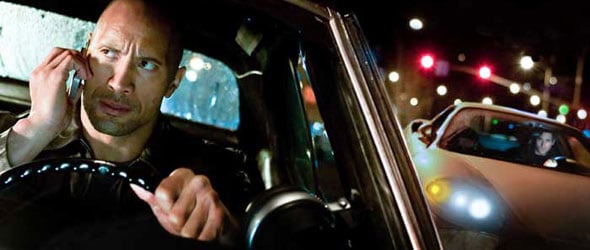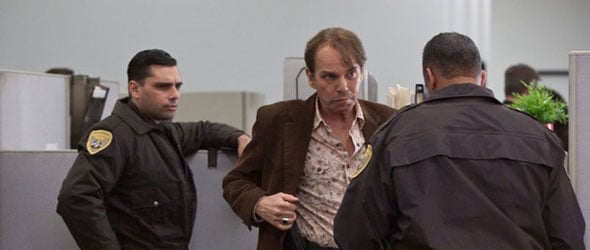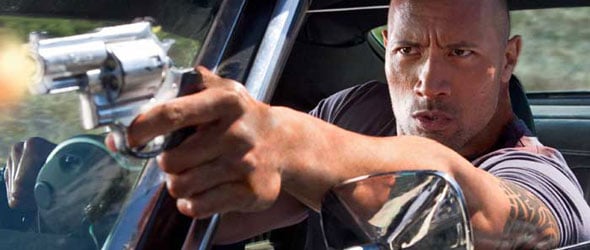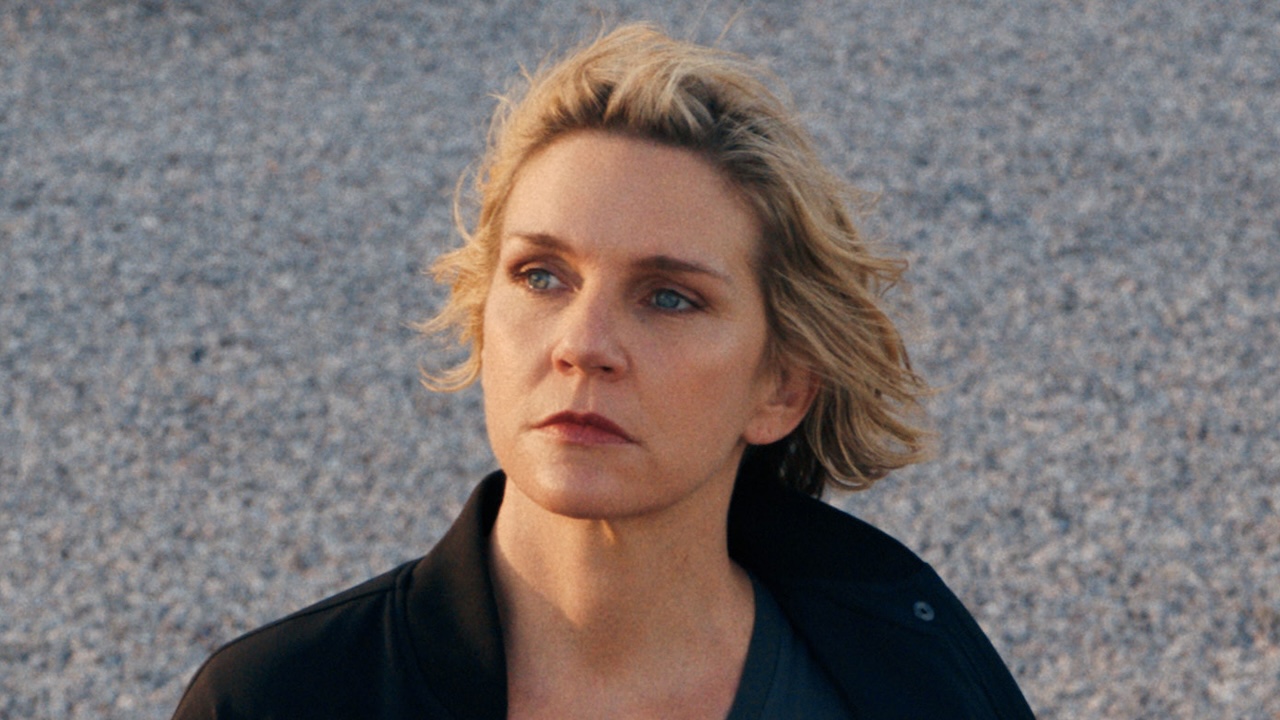Exclusive Interview: Faster Director George Tillman Jr.

George Tillman Jr. has made a career for himself directing dramas like Soul Food, Notorious and Men of Honor. Come Wednesday, however, with the release of Faster in theaters nationwide, people will see a very different kind of Tillman-directed film, namely one that has Dwayne Johnson wielding a six-shooter and getting revenge.
This past Saturday, while covering the junket for the film, I was granted a chance to speak with the director one on one about the film. During our conversation, we talked about the various influences behind the project, planning chases with toy cars and lessons learned about contract provisions. Check out my exclusive interview below.
This movie seems to have a ton of influences. It’s very much urban western meets 70s action with a dash of The Good, The Bad and The Ugly. What were some of the direct influences you had while making the film?
You know what, it’s interesting that you said The Good, The Bad and The Ugly because that’s the structure of Driver, Cop and Killer that we tried to use. But you look at the western backdrop and every character in the movie, the guys with no name, every guy has their own gun, their own style, their own wardrobe, their own music – same thing I did with Driver, Cop, Killer. Driver has his SS, Killer has the Ferrari, Cop has the Crown Vic; one had the luger, one had the glock; each had the music/song that we introduce those guys with. Those are the kind of stuff I use in the backdrop where this takes place – deliberately try not to go into any city. Try and stay out in the mountains and the landscape and the vista, try and use that western influence. Those are the movies I drew up on – Sergio Leone, also, but Steve McQueen, Vanishing Point. I’m not trying to say I’m emulating them, but it’s just using the structure. It’s almost becoming a traditional structure right now. That’s what we really tried to do.
You mentioned the music, and I noticed that there’s a very eclectic mix on the soundtrack. How did you go about picking the titles and artists that you wanted to use?
The great thing is I try to figure it out just watching movies. I spend a lot of time in New York City over the last couple years just after doing Notorious and they have some of the best music stores there so I’m just picking up a bunch of music. I don’t even know where these soundtracks come from. I put them in the movie and they seem to work. You’ve got Kenny Rogers – I was like, “Man, Kenny Rogers works with this stuff!” All of this stuff is really kind of working. And then The Stooges, it was all great stuff and I feel like you have to define a character, who’s not over the top, to their own music. And I was a really big fan of Clint Mansell, who works for Darren Aronofsky. And I like his style of music because it’s not the traditional “in your face.” It’s not your traditional kind of score. So all of that really added to the visuals that we set up for the movie.
In Driver, Cop and Killer you have three characters who individually could be the stars of their own film. Knowing that, what did you have to do to make sure the story stayed balanced and fully developed?
Your Daily Blend of Entertainment News
I shoot a lot of film - that’s one of the things I try to do and it’s one of the things I learned how to do with Robert De Niro on Men of Honor. We shoot a lot, but being specific, not out of control and without point of view. But I try to get the nuance, particularly with Dwayne, with The Driver, who doesn’t say a lot of words. So a lot of time I may be talking to him off camera just feeding him the subtext and keeping the camera rolling. “Let’s go back to one. Let’s try it again. Okay, let’s try it this way,” but still keep the subtext there. What it is, it helps my assembly cuts be so long, but what I try to do is, in the editing process is really getting the right time and the right structure. One thing that I learned for sure out of the three guys, when I’m away from The Driver for a long time the movie starts to tilt. It starts to become, “Where’s the story?” So a lot of that was about trimming things down a little bit and that made me realize that The Driver is our anti-hero – the hero of our movie.

When directing Dwayne Johnson, who is 6’4” and basically all muscle, did you ever feel intimidated?
It was interesting. First when I got involved I was concerned that he was going to be too big, physically too big, because I wanted people to know that he is a guy, a regular guy, and I was just, “Okay, a guy who’s physically huge.” But we started talking a bit, he started cutting his muscles a little differently because this guy was in prison for ten years. But I wasn’t intimidated, more so I was just really happy to get a guy who was physical, who could be physical when I need to be. The main thing I was concerned about was would The Killer, played by newcomer Oliver Jackson-Cohen – can he not be intimidated by someone like The Driver, Dwayne, on screen. Because I knew if he felt any sense of “This dude isn’t going to beat The Driver,” there’s no way that the movie is going to work. So off the bat I had to get over my fears, I had to put them in a room and see if he could hold his own against him and I felt that he was able to dominate some of these scenes. That was a concern that I had from a years ago standpoint for these two.
Speaking of Oliver, this is one of his first two film roles, the other being this year’s Going The Distance. How did he come to the part and what kind of training did he need to be put through?
He’s a method actor, trained from overseas, I know his mom [Betty Jackson] is a major fashion designer, so I know he had a big idea and thoughts about the arts. When I met him, I had talked to a lot of people, I had auditioned a lot of people for the role. A lot of guys were coming in with a cliché contract killer point of view or guys that would come in as James Bond or Tom Cruise. You feel like you’ve seen it. At the end of the day it’s about a young man who is trying to improve himself constantly. That’s what it really is, a young guy who has a lot of money and is very smart and he became a contract killer. That’s kind of a real person. So I felt like he kind of brought a different kind of role to it where it wouldn’t feel cliché. The issue was that he had this accent/dialect and I was never expecting that. It wasn’t meant to be that role. But at the end of the day I felt like, “Okay.” Because the idea was for him to be a little bit more like the character from The Social Network, who just had a lot of money and became a contract killer [laughs]. That was the whole idea! But when he came in, I didn’t mind the accent. What started going, we auditioned and people around the studio were saying, “He’s kind of cute. The accent sounds kind of sexy,” and I was like, “Okay. Maybe that’s the way to go with the film.” [laughs]

Another thing that’s interesting about the casting of this film is that every single character and minor role is played by a known actor, be it Tom Berenger, Jennifer Carpenter or Mike Epps, all of whom don’t get more than five minutes of screen time each. What was the motivation being those choices?
The main two reasons are I wanted to have a collective of really good actors to really elevate the acting in the film; also, to throw off the idea of all of the different kind of actors that have worked with Dwayne in the past. Like, you’ll never see Billy Bob Thornton and Dwayne in the same kind of movie. I just thought that was interesting. Or a person like Mike Epps in a movie with Billy Bob Thornton. So it’s a kind of collective and I really felt it added to the five days that you’re going to run across people. And another thing, too, I was watching these 70s movies sometimes and sometimes you’d look over and say, “Wow, that’s a famous dude. He’s in it one scene? Where did he go?” [laughs]. You see a lot of instances of coming-and-going, I just thought it was really interesting to do something like that. So I really fought to get Tom Berenger in there, someone to watch over me – all of those movies he made in the 80s I just love. So it was great. He’d come on the set and tell me all these great stories about Platoon and talk about his divorce and all that stuff. He was great and really interesting too, to come on set and I’m talking to him and then all of a sudden Billy would come knock on my trailer like, “Hey, I just came here to meet Tom Berenger” [laughs]. All that stuff was great.
As a director you haven’t done much action stuff before, so how did it change your approach and the way that you prepared for making the film?
I think, most of all, I came in as prepared as I can. I really proved to the studio that I could do it. I did a bit of it in Men of Honor with the underwater scenes. I was proud of that sequence too, because I could say, “Hey, I did the underwater stuff in 14 days.” That made me feel like I had the endurance to turn stuff out and really be creative. So in this thing I had it really planned out, told the studio what we want. We only had $24 million. But the most exciting thing about it is I wake up and said “Okay, we have two days to do this car sequence.” So I wake up in the morning and just before I leave for work I ask my son, “Can I borrow your cars?” [laughs] He’s like, “You need my cars?” I said, “Yeah, get your cars.” I’d take five cars, bring them into work, put them on a table, figure out and move all of the cars around, “How are we going to do this stuff?” That stuff was pretty fun, pretty cool, putting that together. Then we go back to the studio, say, “It will take three days,” they say “No, we said two days.” Then I have to go back, restructure… that’s how you be creative and try and figure it out. That’s when I realized in the 70s you look at guys like George Lucas with American Graffiti, he was just figuring that stuff out and how to be creative with the budget that he had. I thought that really brought the spark to the film.

You made the movie using all real cars and keeping the stars of the film behind the wheel. Was there any point where it proved to be a true challenge?
I started looking at it like this – you see movies like The Fast and The Furious and those films are so successful, and have $70-80 million dollars, and we have $24. I was like, “How can we outwit that? How can we do cars better than that?” And you really can’t; they have all of the money that you really need. I just said let’s go back to the nuts and bolts and use what we have, keep it in reality. Maybe we should start doing all this stuff, because we don’t have the money for the CGI to make it look like theirs. At the end of the day, sound design, sound style; don’t even do what they’re doing on their films. Just be more reality, more realistic, and have the guys there. I saw the dailies from the early days of that stuff and said, “Something about this is feeling uniquely fresher for some reason.” Because it feels like their really doing it or something. So I started thinking that’s the approach that we needed to take for every sequence. Thank God we had the boot camp for Billy and Dwayne and Oliver to learn that stuff.
What kind of stuff did the actors learn in the boot camp?
It went great. It’s actually something that’s going to be on the DVD also, making of. Because you can see Dwayne doing some of the practicing for that kind of stuff. He’s really good with the 180s and the turns, he had to get use to the SS Chevelle. Initially in the script the Chevelle was supposed to be a blue SS, but it didn’t quite work. We had to sit him in the car, get the right seat pattern for him, get the right color for his face, get the right coloring for his look. Get Oliver okay. The car that they initially had in the script, I don’t remember what it was, but there are only five of them in the whole world – studio was not going to let me drive one of those cars [laughs]. “Choose another car.” “Ferrari.” Give us the right color. What do you feel comfortable with? All of those things we did through boot camp to figure it out and to make it feel just real.
Was there any hesitation from the studio letting them do their own stunt driving?
Not at all. They were just like, “Finish it in fifty-two days” [laughs]. That was their whole thing. One of the things that I regret, that I should have known that I know now, is when I did my contract to direct the movie I should have put in the contract that I got one of the SS Chevelles. All of those guys do that. Other directors are doing that! I should have done that, that’s the one mistake I did [laughs].

What’s coming up next for you? I’ve read that you’re attached to a project called I Saw You, based on a graphic novel, is that next?
Could be, yeah. That could be next. That’s a romantic comedy, takes place in New York, different people, different characters who see each other and then lose each other. How do you find somebody through the computer/internet world? Second chances, what do you do when you get that second chance? So we’re waiting on the script, that’s with Dreamworks. Again, I’m following the story, I don’t know if that’s going to be the next one. Where the story takes me I go with the story.
Do you have other projects in development?
I have another small story I really love that at some point I need to squeeze in my schedule, it’s really small. It’s about two kids, a 12-year old and an 8-year-old kid, surviving over the summer without their mom. One black kid, one Asian kid, their mom disappeared, probably because of drugs, all they have is one summer to survive in the projects, no food, no lights. They have to run from housing authority because if they get caught they’re going to go to a foster family where they’re going to be abused. All they have is each other and have to survive over 70 days. So it’s this story that I’ve always loved, that I’m attached to.
Based on a true story?
It’s based on a true story. I’m just trying to find the right time and place for that. That’s another specialty kind of movie, so I’m all over what the story tells me to do.
Are you writing that yourself?
It’s already written. Written and ready to go. Just have to find the right time.

Eric Eisenberg is the Assistant Managing Editor at CinemaBlend. After graduating Boston University and earning a bachelor’s degree in journalism, he took a part-time job as a staff writer for CinemaBlend, and after six months was offered the opportunity to move to Los Angeles and take on a newly created West Coast Editor position. Over a decade later, he's continuing to advance his interests and expertise. In addition to conducting filmmaker interviews and contributing to the news and feature content of the site, Eric also oversees the Movie Reviews section, writes the the weekend box office report (published Sundays), and is the site's resident Stephen King expert. He has two King-related columns.
